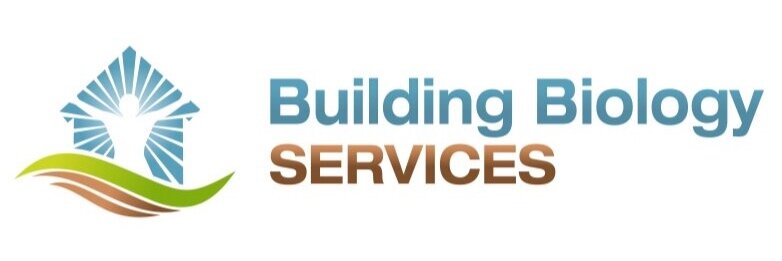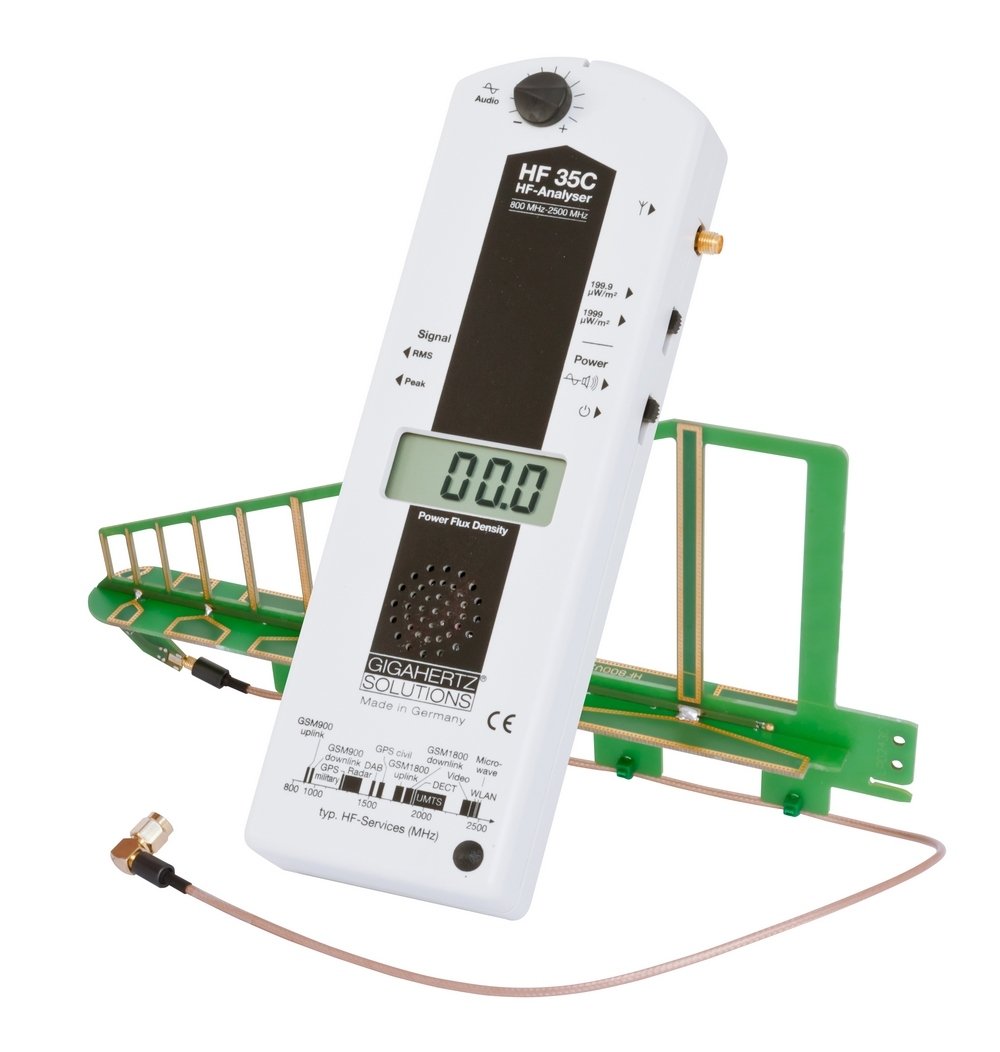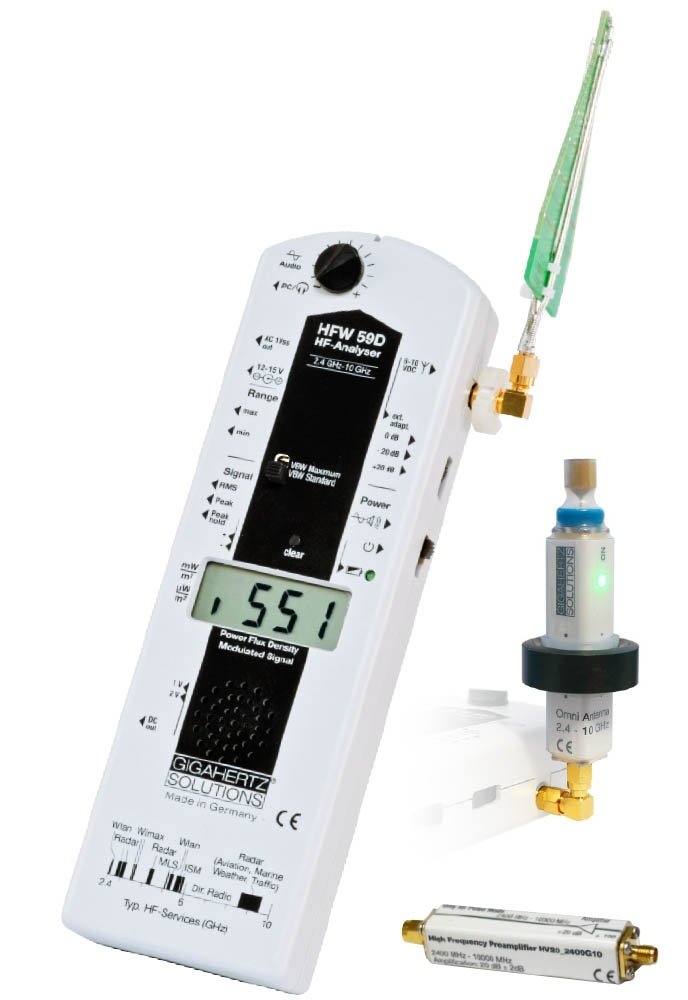 Image 1 of
Image 1 of


HFE59B
The practical range of functions and equipment, together with the inherent advantages of broadband field strength measurement, offers outstanding analysis possibilities for high frequency and makes professional sleep place examinations affordable. The world's most frequently used HF broadband measuring device in building biology professional associations.
Frequency range: 27 MHz to more than 3.3 GHz
The practical range of functions and equipment, together with the inherent advantages of broadband field strength measurement, offers outstanding analysis possibilities for high frequency and makes professional sleep place examinations affordable. The world's most frequently used HF broadband measuring device in building biology professional associations.
Frequency range: 27 MHz to more than 3.3 GHz
The practical range of functions and equipment, together with the inherent advantages of broadband field strength measurement, offers outstanding analysis possibilities for high frequency and makes professional sleep place examinations affordable. The world's most frequently used HF broadband measuring device in building biology professional associations.
Frequency range: 27 MHz to more than 3.3 GHz
Established worldwide as THE benchmark for broadband RF measurement technology for committed building biologists:
The extra broad frequency range amongst others comprises cell phone services such as GSM (2G), UMTS/CDMA (3G), LTE (4G), 5G (wide area bands), wireless phones, smart meters, the lower wireless LAN / Wi-Fi band, Bluetooth, TETRA/BOS, TV, broadcast radio, and of course also the “old” but important CB-radio and microwave ovens. The lower airport radio frequencies are also comprised.
The HFE59B comes with two antennas… The horizontally-isotropic ultra broad bandwidth antenna UBB27_G3 from 27 MHz up to beyond 2.7 GHz (so called "Omni" characteristic). With the help of its tiny resonator, it can also detect very tight but especially high local peaks, which cannot be covered by the log.-per. antennas but are of great importance for the building biology.
The especially compensated log.-per. antenna for the range above 700 MHz for a reliable localization of the sources of radiation. The upper frequency limit of both antennas is 3.3 GHz.
High sensitivity: display resolution 0.01 µW/m². An important factor especially for EHS patients (electrohypersensitives). The external preamplifier HV10 allows an increase of the sensitivity by a further factor of 10!!
Maximum measured value 19.99 mW/m² (= 19,990 µW/m²), additionally increased up to 1.999 W/m² (= 1,999,000 µW/m²). if used with the attenuator DG 20_G10. Together with the preamplifier this results in an outstanding dynamic range of 93 dB!
The high pass filter HP700 allows a suppression of falsifying frequencies below 700 MHz when measuring with the log.-per. antenna.
Measurements are much simplified by the "peak hold" function. Particularly fast response speed due to a patented circuit.
Calibrated AC measurement output for the demodulated signal, scalable DC output, for instance for a connection to our NFAs for long-term recordings.
Quantitative differentiation of pulsed <> unpulsed radiation according to the building biology recommendations.
NiMH battery pack, charge control and power supply unit help avoid unnecessary battery wear.
Delivered in a plastic case K2 with convoluted foam filler for a safe transportation of all components. Enough space for yet another instrument from Gigahertz Solutions (HF or LF).
For the sake of completeness, it goes without saying that all the common advantages of the series are also met here:
It is fully frequency compensated, i.e. no frequency range is overrated, underrated or even ignored.
In addition, our measurement technology always shows the SUM of ALL existing radiation at the place of measurement, not only the strongest signal, as is the case with the cheap - allegedly - very broadband detectors that have been launched on the market in recent years.
The two features mentioned above are extremely important for a meaningful measurement and technically very difficult to implement. This is also the reason for the unique position of our instruments in their respective price class.
All of this happens continuously in real time - thus a meaningful measurement is possible considerably faster than with a spectrum analyzer, yet another advantage with regard to far more expensive and complicated measurement technology.
The measured values are displayed reliably and directly in the unit of the building biology precautionary values - without any calculations being necessary.
The HF-Analysers are equipped with a fully-fledged log.-per. antenna. This clearly sets them apart technologically from compact pocket devices without an external antenna. The log.-per antennas of the devices allow users to detect and measure even hidden sources of high frequency electromagnetic radiation (HF). The measurement can take place both indoors and outdoors (protect the meter from moisture!).
Detailed measuring instructions with limiting values allow a reliable evaluation of the personal exposure - even without technical expertise.
Last but not least: Many patents have been granted to us, the devices have ten thousandfold proven their reliability, and have shown to be leading-edge in their price categories.
Technical Data
Frequency range: 27 MHz to more than 3.3 GHz
Measurement range: Power flux density: 0.001 - 1,999,000 µW/m² (i.e. 1 nanoW/m² nominal display resolution to 1.999 W/m² when applying the amplifier and attenuator enclosed)
Precision:
Basic accuracy (CW) including linearity tolerance: +/- 3 dB
Zero offset and rollover +/- 5 digits
Sensor:
2 antennas:
Optimised logarithmic periodic antenna with frequeny compensation directly on the antenna: Less ripple, better directionality, improved shielding vs. ground, continuous LED-monitoring of quality of connections
Quasi-isotropic ultrabroadband antenna ("omni"-characteristic) aligned for vertically polarised fields
Audio analysis: Identification of pulsed radiation sources (mobile radio (GSM, UMTS/G3), cordless telephones (DECT), WLAN (Bluetooth), air-traffic control radar) by means of an acoustic signal proportional to the modulation frequency
Signal rating:
Display of peak value, peak hold as well as average value (switchable) Quantitative differentiation between pulsed and un-pulsed radiation (patented control)
Signal output ports: A calibrated extra AC-measurement output for the demodulated signal, and a scalable DC-output
Power supply:
Rechargeable highpower 9.6 Volt NiMH battery pack inside the meter
Average operation time: 7 - 8 hours
Low-Batt. indication
Auto-power-off (can be deactivated for longterm measurements)
AC-adaptor for charging and longterm operation included





